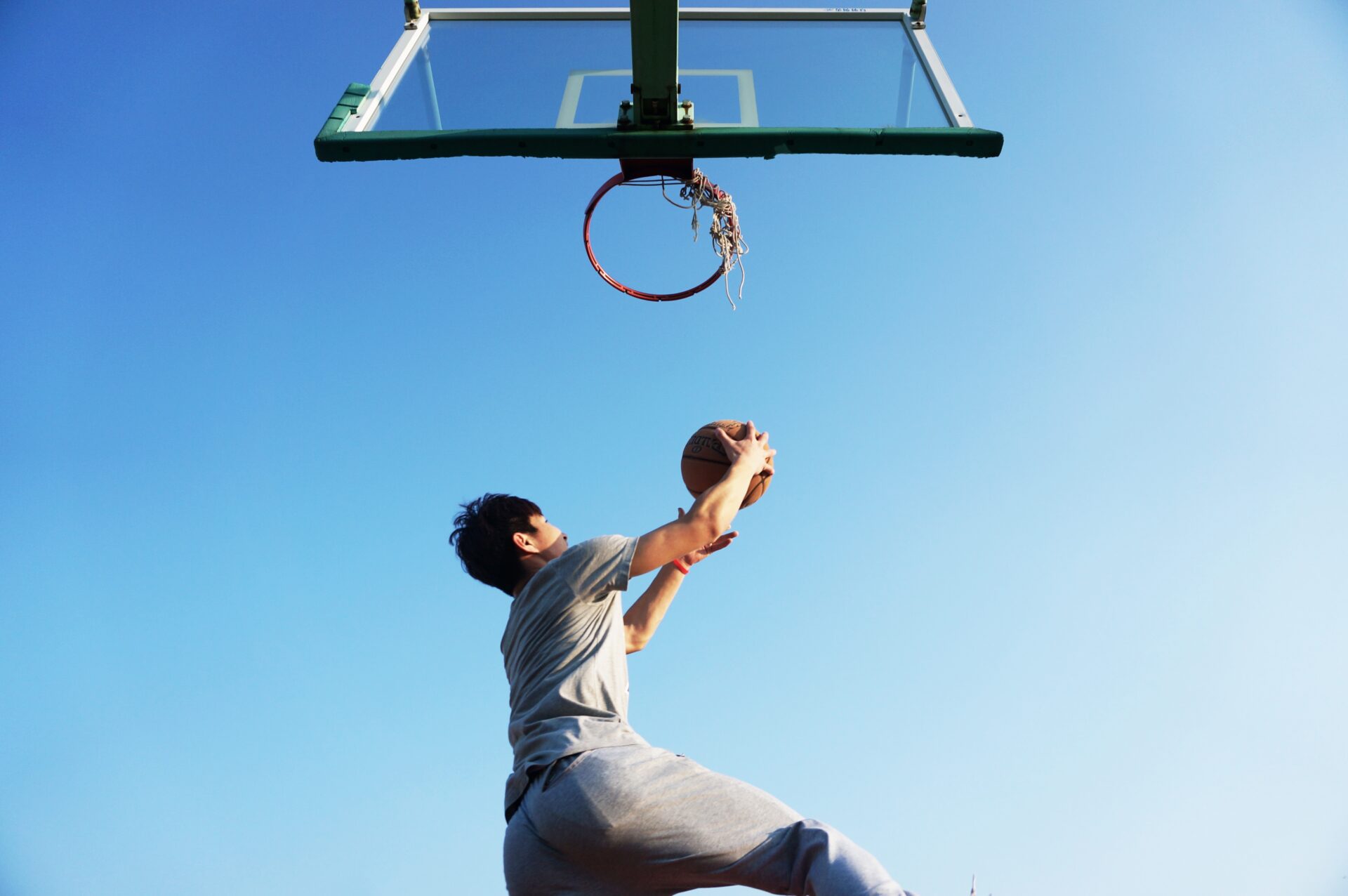The shot put is a field and track event that involves athletes throwing a heavy metal ball as far as possible. One of the most important factors in shot put performance is the weight of the ball, as a heavier ball requires more strength to throw further. So, how much does a shot put ball weigh?A shot put ball typically weighs 16 pounds (7.26 kg).
Standard Weight of a Shot Put Ball
A shot put ball is a spherical object used in the sport of track and field. It is typically made of solid metal or rubber and can weigh up to 7.26 kg (16 lbs). The weight of the shot put ball is important for the competition, as it affects the distance that can be achieved when thrown. The International Association of Athletics Federations (IAAF) has set a standard weight for a shot put ball that varies depending on the gender and age group of athletes competing.
For men’s events, the standard weight for a shot put ball is 7.26 kg (16 lbs). For women’s events, the standard weight is 4 kg (8.8 lbs). In youth competitions, the standard weights vary based on age group and gender. For boys aged 11-12 years old, the standard weight is 5 kg (11 lbs); for girls aged 11-12 years old, it is 3 kg (6.6 lbs). Similarly, for boys aged 13-14 years old, the standard weight is 6 kg (13.2 lbs); for girls aged 13-14 years old, it is 4 kg (8.8 lbs).
The IAAF also sets standards for other track and field events such as javelin throwing and discus throwing. Shot put balls are available in different weights depending on what competition they are intended to be used in. It is important to use a shot put ball that meets these standards so that athletes can get an accurate representation of their performance in each event they compete in. The IAAF ensures that all athletes have equal opportunities to compete by setting these standards for each event.
Variations in Shot Put Ball Weight
Shot put is a track and field event in which athletes attempt to throw a heavy ball the farthest distance. The shot put ball can vary in weight and size depending on the level of competition. The ball used in international competitions is the 16-pound men’s shot, while the women’s shot is 8.8 pounds. In high school and college competitions, men can use either a 12-pound or 16-pound ball, while women can use either a 6-kilogram or 4-kilogram ball. This difference in weight affects how far each athlete can throw the shot put, as well as how much force they need to generate when throwing it.
The heavier shots are more difficult to throw, and require more strength and power from the athlete than lighter ones. This makes it important for athletes to be familiar with the weight of their shot before competing at an event so they can adjust their technique accordingly. Heavier shots also tend to generate more speed due to their inertia, which helps them travel further distances when thrown correctly. However, this also means that if the thrower does not have enough strength and power behind their throw, it will not travel as far as it could with a lighter shot.
When practicing for competitions, athletes should experiment with different weights of shots to find out what works best for them. This way they will be able to determine which weight is best suited for their own technique and throwing style. Different weights of shots may also affect technique differently depending on an athlete’s body type; for example, those with longer arms may be better suited for heavier shots due to increased leverage when throwing them. Ultimately though, finding the right balance between power and technique is key to success in this event.
The Effect of Temperature on Shot Put Ball Weight
Shot put is a sport that involves throwing a heavy metal ball. The performance of an athlete in shot put is highly dependent on the weight and size of the ball they use. The weight of the ball can be affected by environmental factors, such as temperature. In cold weather, the metal ball can become heavier due to condensation and other factors, while in hot weather it can become lighter because of expansion and other factors.
To understand how temperature affects the weight of a shot put ball, it is important to consider the physical properties of metals. Metals tend to expand when heated and contract when cooled. This means that when a metal shot put ball is heated, it will become larger and lighter in weight. On the other hand, when it is cooled, it will become smaller and heavier in weight due to contraction. Therefore, if an athlete is competing in cold weather conditions, they should expect their shot put ball to be heavier than if they were competing in warm weather conditions.
In addition to expanding and contracting due to temperature changes, metals can also be affected by condensation or dew formation. When water droplets form on a metal surface, they add additional mass which increases the overall weight of the object. This means that a shot put ball may become heavier when exposed to cold temperatures due to condensation forming on its surface.
Finally, it is important to consider that different metals react differently to changes in temperature. For example, some metals may expand more than others when exposed to heat or contract more than others when exposed to cold temperatures. Therefore, athletes should consider which type of metal their shot put balls are made from before attempting any competition in different temperatures as it will affect the performance of their throws significantly.
In conclusion, temperature has a significant impact on the weight of a shot put ball due to changes in size caused by expansion or contraction as well as additional mass caused by condensation or dew formation on its surface. Athletes should take these considerations into account before competing so that they can ensure they are using balls with optimal weights for their throws
What Factors Impact the Weight of a Shot Put Ball?
The weight of a shot put ball is an important factor in determining the distance it travels when thrown. The heavier the ball, the more momentum it will have and can result in longer throws. However, there are several factors that can influence the weight of a shot put ball which can affect its performance. These factors include size, material, and design.
Size
The size of the shot put ball is one of the most important factors when it comes to its weight. Smaller balls tend to be lighter than larger balls, so if you want to optimize your performance you should choose a size that is best suited for your height and strength.
Material
The material of the shot put ball can also impact its weight. Some materials, such as steel or lead, are naturally heavier than others like aluminum or plastic. The weight of the material will determine how heavy the final product is and thus how much momentum it will have when thrown.
Design
Finally, the design of the shot put ball can also affect its weight. If there are grooves or dimples on the surface of the ball then it will be lighter than a smooth surface since there is less air resistance on those surfaces which makes them less dense overall. Additionally, some designs may feature hollow chambers inside which would also reduce their overall weight due to a decrease in mass.
In conclusion, there are several factors that can influence the weight of a shot put ball which affects its performance when thrown. Size, material, and design all play important roles in determining how heavy it will be so athletes should take these into consideration when selecting one for competition use.

Different Weights of Shot Put Balls Used in Competitions
Shot put is a track and field event where athletes attempt to throw a heavy metal ball as far as they can. The shot put ball commonly used in competitions is made of solid iron or steel with a smooth, spherical shape. The weight of the shot put ball varies according to the age groups competing.
The International Association of Athletics Federations (IAAF) and the United States Track & Field (USATF) both have guidelines that specify the different weights for men and women competing in shot put events. For men, the weight of the shot put ball ranges from 16 pounds for youth competitors to a maximum of 16 pounds for senior competitors. For women, the weight ranges from 8.8 pounds for youth competitors to 12 pounds for senior competitors.
In addition to these set weights, there are also “unofficial” weights that are sometimes used in competitions. These include heavy balls that weigh up to 22 pounds for men and 14 pounds for women. These heavy balls are usually used in training sessions or informal competitions, but not in sanctioned events since they do not meet with IAAF or USATF guidelines.
The choice of which weight of shot put ball to use ultimately depends on the experience and strength level of the athlete competing in the event. Novice athletes should start with lighter weights until they build up their strength and technique, while more experienced athletes can move up to heavier weights as their muscles become more adapted to the task at hand.
Whatever weight is chosen, it’s important that it meets IAAF or USATF guidelines so as not to affect an athlete’s performance unfairly compared to other competitors who may be using a different size or weight of shot put ball than them.
Average Weight of a Men’s Shot Put Ball
The average weight of a men’s shot put ball is 16 pounds (7.257 kg). This is the official weight for men competing in the Olympics and other international competitions. The weight of the ball varies slightly depending on the age and ability of the athlete, with younger athletes using lighter balls. The size of the ball is also important, with larger balls being heavier than smaller ones.
Because shot put balls are made from metal or plastic, their weights can vary based on their composition. Metal shot put balls are typically heavier than plastic ones, and this difference in weight will affect an athlete’s performance. The shape of the ball is also important as a rounder shot put ball will be easier to throw than one which is more oblong or egg-shaped.
Average Weight of a Women’s Shot Put Ball
The average weight of a women’s shot put ball is 4 kilograms (8.818 lbs). This weight is used for all female athletes competing in international competitions such as the Olympics and World Championships. Like men’s shot put balls, women’s shot put balls come in different shapes and sizes which can affect their weight and performance.
The material used to make the shot put ball also affects its weight; metal balls are typically heavier than plastic ones, although this difference may not be as great as it is for men’s shots. Additionally, rounder shots are generally easier to throw than those that have an oblong or egg-shape to them. As such, athletes must consider both the shape and material when choosing their ideal shot put ball.
What Is the Lightest and Heaviest Possible Weights for a Shot Put Ball?
The shot put is an athletics event that requires the athlete to throw a metal ball as far as possible. The official shot put ball may be made from metal, iron, or brass and must weigh between 4kg and 7.26kg. The exact weight of the ball is dependant on the athlete’s choice, given that it falls within these parameters.
The lightest possible weight for a shot put ball is 4kg, which is the minimum weight allowed by the International Association of Athletics Federations (IAAF). This weight can be achieved if the athlete selects a lighter material such as aluminium or plastic. The heavier materials such as iron or brass are not allowed for this event.
On the other hand, the heaviest possible weight for a shot put ball is 7.26kg. This weight can be achieved if the athlete selects one of the heavier materials such as iron or brass. Generally speaking, athletes tend to choose heavier shots to help them with their technique and generate more power during their throws, so they often opt for heavier shot puts.
In summary, the lightest and heaviest possible weights for a shot put ball are 4kg and 7.26kg respectively. The exact weight within this range is dependent on the athlete’s choice of material – with lighter materials producing a lighter shot put and heavier materials producing a heavier one.

Conclusion
The size and weight of a shot put ball vary depending on the age and gender of the athlete. The IAAF has specific regulations for shot put ball weights, ensuring athletes are competing on a fair playing field. In general, women’s shot put balls weigh between 4kg and 7.256kg, while men’s balls weigh between 7.257kg and 16lbs. Regardless of the weight of the ball, all athletes must develop strength and technique to throw a heavy shot put ball as far as possible.
Shot put is an incredible sport that requires skill, strength, and technique to be successful. With its rich history spanning over centuries, it is a classic Olympic event that continues to captivate audiences around the world. Whether you’re a competitive athlete or just curious about how much a shot put ball weighs, this article has provided you with all the information you need to know!




